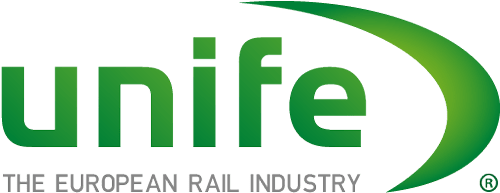Introduction
In the realm of railway infrastructure maintenance, ensuring the safety and reliability of tracks is paramount. Traditional methods of track condition monitoring often fall short in providing real-time insights and proactive solutions. However, with the advent of advanced methodologies like ATTITUDE, there is a transformative shift towards track condition monitoring.
In this guide, we delve into the ATTITUDE methodology, a revolutionary approach that combines data acquisition, continuous measurement, trend analysis, and prioritised maintenance. By following these steps, railway operators can implement their own track condition monitoring solution, elevating their maintenance practices to new heights of efficiency and reliability.
A – Acquire
The first step in implementing the ATTITUDE methodology is to gather essential data about track conditions. This involves installing sensors on in-service trains, including vibration sensors, GPS receivers, and trajectory sensors. These sensors provide critical insights into track stability, smoothness, and movement, laying the foundation for condition based monitoring.
T – Taping
Continuous measurement while trains are in motion is essential for real-time insights into track conditions. Unlike traditional periodic readings, continuous measurement allows for immediate detection of anomalies or issues, enabling proactive maintenance and minimising risks. This approach ensures that no critical information slips through the cracks, enabling immediate detection of anomalies or issues.
T – Transfer
Efficient data transfer is vital to maintain uninterrupted monitoring. Wireless transmission of data guarantees prompt analysis and action. Furthermore, employing edge processing can minimize data transfer sizes, optimizing bandwidth usage and facilitating seamless data transmission. It’s important to consider data transfer in regions with limited network coverage. In such instances, it’s imperative to store data until the train regains network connectivity.
I – Identify
Location data needs to be analysed to identify data that originates from fixed assets or specific track sections, pinpointing potential problem areas within the infrastructure.
T – Trend
Analysing collected data plays a pivotal role in pinpointing trends and patterns, which enables the early detection of emerging issues. By gaining insight into data trends over time, railway operators can forecast potential problems and implement proactive measures to mitigate them, thereby minimising downtime and operational disruptions. Utilising condition indicators forms the backbone of diagnosing specific defects in track infrastructure. For more in-depth information on this topic, we invite you to explore our blog titled “Mastering the Art of Developing Condition Indicators for Track Condition Monitoring” at this link https://www.eke-electronics.com/mastering-the-art-of-developing-condition-indicators-for-track-condition-monitoring/
U – Understand
In-depth analysis allows for the prioritisation of maintenance tasks based on the severity of alerts and warnings. By focusing on high-priority issues, railway operators can optimise resource allocation, minimise disruptions, and enhance overall safety and reliability.
D – Diagnosis
Accurate diagnosis of underlying issues is crucial for effective maintenance planning. Understanding root causes allows for targeted and efficient solutions, reducing recurring problems and maintenance costs.
E – Execute
The execution stage brings all components together, enabling proactive maintenance and improvements. Insights obtained from the ATTITUDE methodology drive effective actions to enhance safety, reliability, and efficiency.
Conclusion
Implementing the ATTITUDE methodology offers railway operators a comprehensive framework for track condition monitoring. By following these steps, operators can enhance safety, minimise downtime, and optimise maintenance efforts, ensuring the reliability of railway infrastructure.
Ready to revolutionise your track maintenance practices? Contact us today for a demonstration of our SmartVision Track Condition Monitoring solution, built on the ATTITUDE methodology. Let us help you unlock the power of proactive maintenance and ensure the safety and reliability of your railway infrastructure. www.eke-electronics.com/contact-us
By Lassi Sundqvist
Product Owner, SmartVision
EKE-Electronics

More about Lassi Sundqvist
Lassi has at EKE-Electronics for 4 years guiding the development of the SmartVision product family. He joined the team during the first steps of the Track Condition Monitoring development and has since immersed himself in understanding the underlaying problems and customer needs, ensuring that the SmartVision Track Condition Monitoring solution is producing the highest value for customers.
Prior to joining EKE, Lassi amassed over a decade of experience in IoT software development. During this time, he honed his expertise in building robust systems, spanning from edge devices and connectivity to cloud-based dataflows and visualization
If you would like to find out more about how the ATTITUDE Methodology helps to improve track reliability, safety, and efficiency please contact us to arrange a demonstration.

